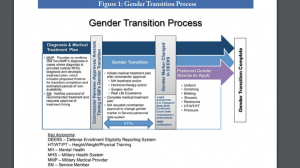Executive Summary
Providing 800,000 pap tests, 1 million breast exams, and 6 million STD tests in 2015 alone, Title X Family Planning Program is an essential aspect to adequate health care. With current proposed budget cuts to federal funding of Title X, over 4 million people that rely on Title X yearly would be affected and lose health care they would otherwise not be able to afford. That would mean losing contraceptive services, lifesaving cervical and breast cancer screenings, yearly exams and STD treatments, just to name a few. Title X is absolutely imperative to our healthcare system and budget cuts would have detrimental effects of people everywhere.
Introduction
Taking a look back at history, women have come a long way, from fighting for the right to vote, the ability to work, to present day simply fighting for their voices to be heard. In the recent months especially, the empowerment of women seems to be a relevant and prominent aspect of our society. With this passion and drive, women come together to fight for equality and fairness and to fight for the ability to control their own decisions and life. Title X does just that. This program grants women more control over their health decisions, such as deciding exactly if and when they choose to have children by preventing unintended pregnancies. In 2014 alone, services offered through Title X helped prevent 1.9 million unintended pregnancies. This program acts almost as a security blanket to help women with early detection of cancers, treatment for STDs, etc. So with all these positive aspects to this program, why would legislators ever propose defunding this program that could put these women into harms way, directly impacting their health? The message is simple, defunding or cutting the budget for this program would directly negatively impact millions. Over 4 million people rely on Title X yearly, and 80% of those people are low-income individuals living below the poverty line. So instead of potentially harming our most vulnerable groups in society, shouldn’t legislators look for ways to empower and protect them?
Approaches and Results
With roughly 38 million women in need of contraceptive services in the US and a whopping 4.7 million of women with low income without adequate coverage for family planning, Title X is essential. The facts are clear, Title X has helped decrease these numbers immensely and taking it away or defunding it would only cause more people, especially women, to lose out on proper health care for planning for starting and maintaining families. This program has immense benefits and is actually a program that saves taxpayers money, unlike a lot of our programs in society. Specifically, it was found that for each dollar invested into the Title X program; the government saves around $7 in Medicaid costs. This program is worth the investment, saving people money, and is saving lives.
Conclusion
Title X has provided low-income families, especially women with health care they once could not afford. From life-saving screenings, to testing and treatment methods, to educational information on prevention and protection from disease, Title X is a necessary program in our society. The majority of Title X beneficiaries are vulnerable populations and people of color, and as a society we should foster this program to help these groups flourish and survive.
Implications and Recommendations
Get involved and get informed by learning more about Title X and Planned Parenthood at: https://www.plannedparenthoodaction.org/issues/health-care-equity/title-x And Click this link to help donate to Planned Parenthood Action Fund today: https://secure.ppaction.org/site/Donation2?df_id=23692&23692.donation=form1&s_subsrc=4NALz1705S1N1V&s_src=ElectionResults_1116_News_c4_c4web&_ga=1.253198409.1780154547.1492091542

